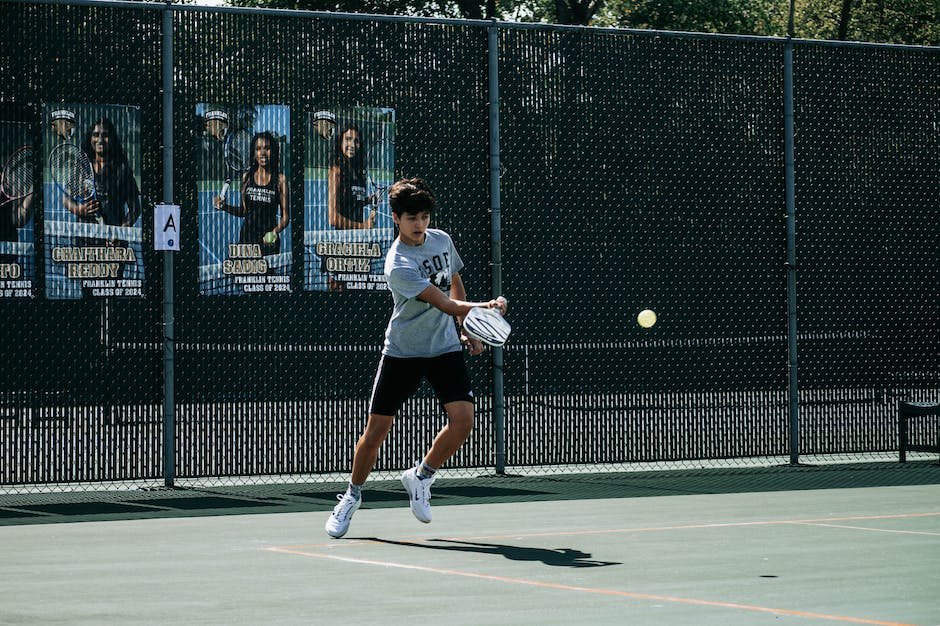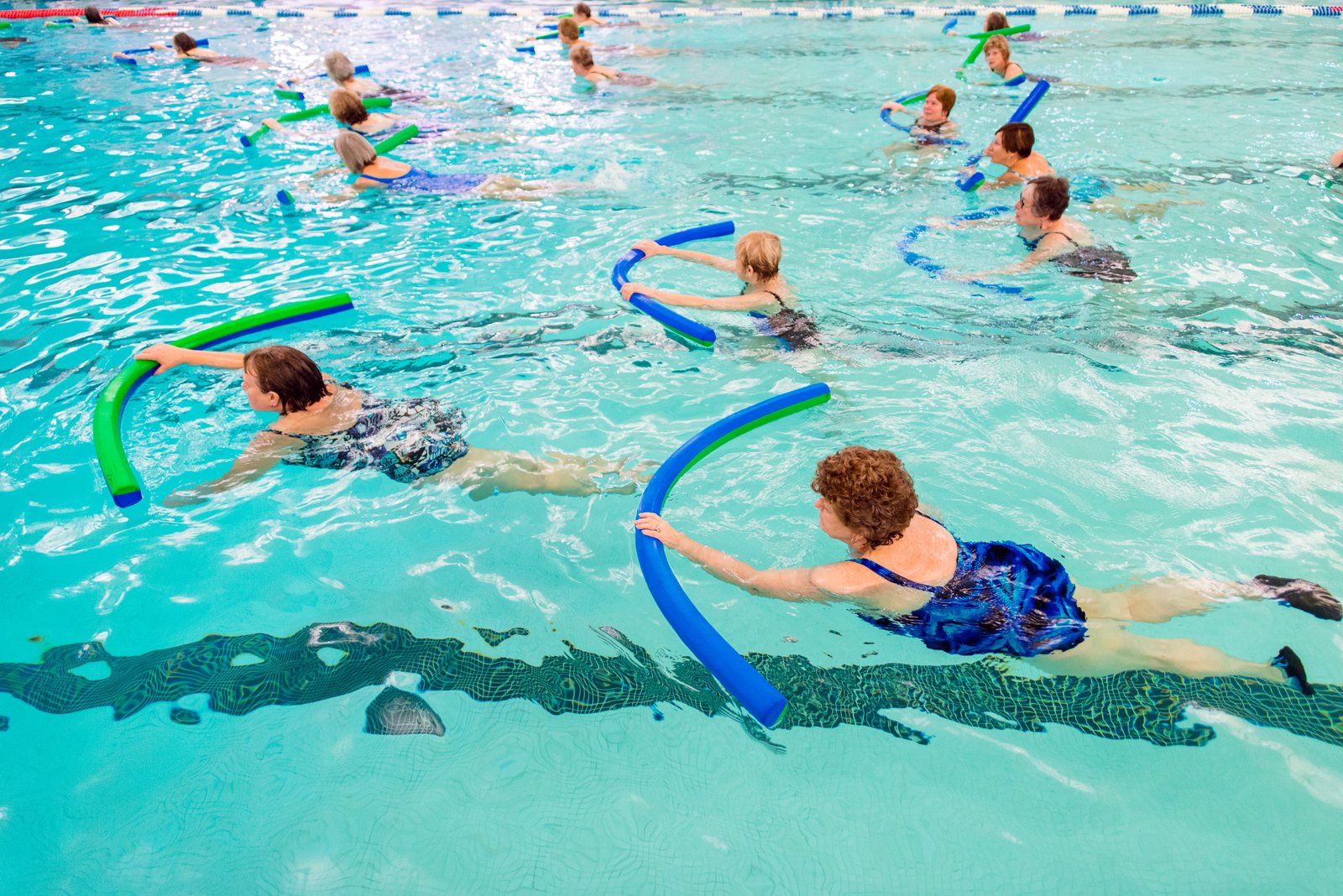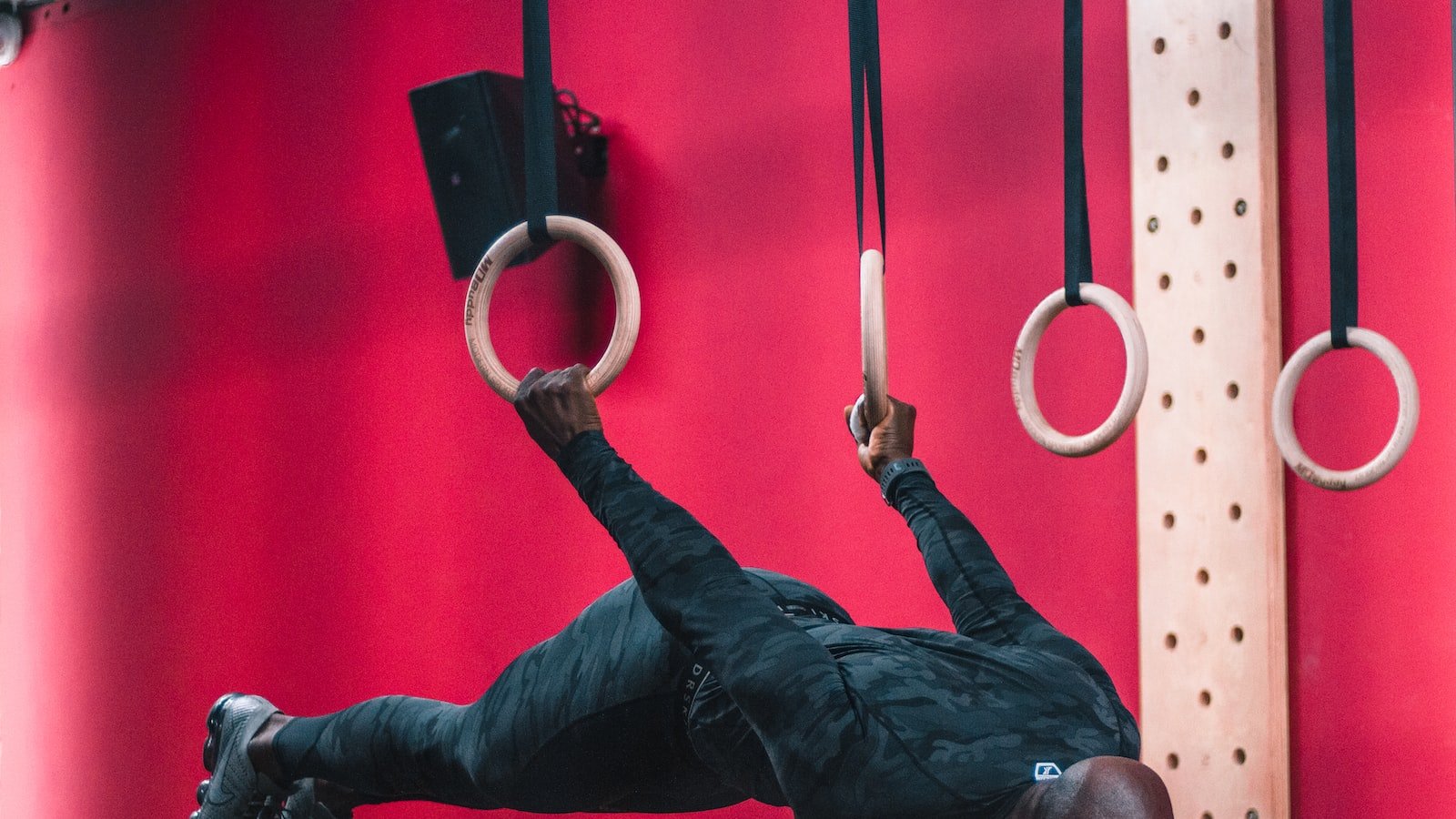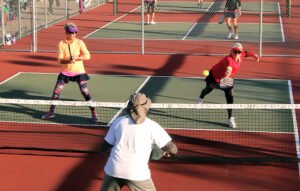Imagine a sport where agility meets finesse, where strategy intertwines with quick reflexes, and where the sound of a paddle striking a ball becomes a symphony of skill. This captivating sport, known as pickleball, has taken the world by storm, attracting players of all ages and abilities. But what if there was a secret weapon that could enhance the performance of pickleball players, fueling their strength, endurance, and mental acuity like never before? Look no further than the turquoise embrace of shimmering waters – swimming. Yes, dear pickleball enthusiasts, beneath the rippling surface lies a treasure trove of benefits that can elevate your game to unprecedented heights. So strap on your goggles, dive into this article, and discover how the symbiotic relationship between swimming and pickleball can unlock your true potential on and off the court.
Table of Contents
- The Benefits of Swimming for Pickleball Players:
- Improve Cardiovascular Endurance and Stamina through Aquatic Exercise
- Enhance Flexibility and Joint Mobility for Peak Performance
- Aid in Injury Prevention and Rehabilitation for Prolonged Play
- Immerse in Low-Impact Training to Ease Muscular Strain
- Boost Mental Focus and Overall Well-being with Water-based Workouts
- Q&A
- Final Thoughts

The Benefits of Swimming for Pickleball Players:
Swimming is not only a fun and refreshing activity, but it also offers numerous benefits for pickleball players. Dive into the pool and embrace the following advantages that swimming can bring to your game:
- Enhances cardiovascular fitness: Swimming is a highly effective aerobic exercise that engages multiple muscle groups while providing an intense cardiovascular workout. Regular swimming sessions can improve your endurance, allowing you to stay energized during those long and intense pickleball matches.
- Low impact on joints: Unlike many other types of sports, swimming is low impact, reducing stress on your joints and minimizing the risk of injuries. This makes it an ideal cross-training activity for pickleball players, providing a way to improve fitness and maintain a high level of athleticism while giving your joints a break from the repetitive movements on the court.
- Strengthens core and full-body muscles: Swimming is a full-body exercise that engages muscles from head to toe. By consistently practicing different swimming strokes and using different muscles, you can develop a strong core and overall muscular strength. This added strength can improve your stability, power, and balance on the pickleball court.
- Improves flexibility and range of motion: The fluid movements of swimming help improve flexibility and range of motion in your joints. This increased flexibility can give you an edge on the pickleball court, allowing you to move more fluidly, reach for shots, and execute powerful swings with ease.
- Effective cross-training tool: Swimming is a fantastic cross-training activity for pickleball players. It provides a break from the repetitive movements and impact of pickleball while still providing a challenging workout. Incorporating swimming into your training routine can help prevent overuse injuries and promote overall fitness and well-being.
So go ahead, take a dip in the pool, and reap the benefits that swimming can bring to your pickleball game!

Improve Cardiovascular Endurance and Stamina through Aquatic Exercise
When it comes to boosting your cardiovascular endurance and stamina, aquatic exercise can be an excellent choice. Not only does it provide a refreshing and enjoyable way to work out, but it also offers numerous benefits for your heart and overall fitness levels.
One of the key advantages of aquatic exercise is the low-impact nature it offers. Unlike traditional land-based workouts, exercising in the water significantly reduces stress on your joints, making it ideal for individuals with joint pain or those recovering from injuries. Whether you’re swimming laps, doing water aerobics, or even participating in aqua jogging, your body will experience increased resistance due to the water’s density, resulting in an effective cardiovascular workout.
- Enhanced cardiac health: Regular aquatic exercise promotes a stronger heart by challenging it to pump blood more efficiently. The water’s resistance forces your heart to work harder, thus improving endurance and reducing the risk of cardiovascular diseases.
- Increased lung capacity: Engaging in aquatic exercise stimulates deep breathing and expands lung capacity as you adapt to performing activities in an oxygen-deprived environment. Over time, this can lead to improved respiratory function and better overall oxygen uptake.
- Improved circulation: As your cardiovascular system works harder during aquatic exercise, blood flow to your muscles and organs increases significantly. This increased circulation helps deliver essential nutrients and oxygen to the body, enhancing overall cellular function and aiding in the removal of waste products.
So, if you’re looking for a fun and invigorating way to enhance your cardiovascular endurance and stamina, dive into aquatic exercise! With its low-impact nature and numerous benefits for your heart and overall fitness, it’s time to make a splash and reap the rewards.

Enhance Flexibility and Joint Mobility for Peak Performance
Flexibility and joint mobility are crucial elements for individuals aiming to achieve peak performance in their physical activities. By enhancing these aspects, athletes, fitness enthusiasts, and even those engaged in everyday activities can significantly improve their overall performance. Here are some effective ways to enhance flexibility and joint mobility:
- Stretching exercises: Incorporating regular stretching exercises into your routine can help increase flexibility and range of motion in joints. Focus on dynamic stretches before your workout and static stretches afterwards to improve flexibility.
- Yoga or Pilates: Engaging in yoga or Pilates classes can do wonders for both flexibility and joint mobility. These practices combine stretching, strength training, and breath control to improve flexibility, balance, and overall body control.
- Joint mobility exercises: Specifically target your joints with exercises designed to increase their range of motion. Incorporate exercises like shoulder rotations, ankle circles, and hip hinges into your routine to promote joint flexibility.
- Balance exercises: Enhancing balance not only improves joint stability but also aids in overall flexibility. Include exercises like single-leg stands, wobble board training, or yoga poses that challenge your balance to promote joint mobility.
- Proper nutrition and hydration: A well-balanced diet rich in essential nutrients and staying hydrated can support joint health and flexibility. Incorporate foods high in omega-3 fatty acids, vitamins, and minerals to nourish your joints and prevent stiffness.
- Rest and recovery: Ensure you give your body enough time to rest and recover between intense activities. Adequate rest allows your joints to rejuvenate and reduces the risk of injury.
Remember, flexibility and joint mobility not only enhance performance but also play a vital role in preventing injuries. Incorporate these tips into your routine to unlock your full potential and maintain exceptional physical performance.

Aid in Injury Prevention and Rehabilitation for Prolonged Play
When it comes to engaging in prolonged play or intense physical activity, injury prevention and rehabilitation become paramount. Here are some essential tips and techniques to ensure you stay on top of your game:
- Stay Hydrated: It’s crucial to keep your body hydrated during extended periods of play. Drinking enough water not only maintains your energy levels but also helps prevent muscle cramps and strains that can lead to injuries. So, always remember to carry a water bottle and take regular sips throughout your play session.
- Warm-Up and Stretch: Before diving headfirst into any physical activity, make sure to warm up your muscles and stretch properly. Warming up increases blood flow to your muscles and prepares them for the demands of prolonged play. Incorporating dynamic stretches like leg swings or arm circles will help improve flexibility and reduce the risk of strains or sprains.
- Use Proper Equipment: Investing in good-quality equipment that suits your sport or activity is crucial in injury prevention. Whether it’s wearing supportive shoes, using protective padding, or choosing the right-sized equipment, ensuring a proper fit will greatly reduce the risk of injuries and enhance your performance.
Should an injury occur, it’s vital to focus on effective rehabilitation to aid recovery and prevent further complications. Consider the following:
- Rest and Ice: Immediately after sustaining an injury, remember to rest the affected area and apply ice to reduce swelling and inflammation. Applying ice for 15-20 minutes at a time, several times a day, helps control pain and speeds up the healing process.
- Seek Professional Help: In cases of severe or persistent injuries, don’t hesitate to consult a healthcare professional such as a sports therapist or physiotherapist. Their expertise will guide you through appropriate exercises and treatments to rehabilitate and strengthen the affected area.
- Gradual Return to Play: Rushing back into physical activity too soon after an injury can worsen or reaggravate the problem. Gradually reintroduce yourself to play, following professional advice and gradually increasing your activity level to avoid setbacks and ensure a full recovery.
By incorporating these injury prevention techniques and following proper rehabilitation procedures, you can enjoy prolonged play while minimizing the risk of injuries and ensuring a safe and enjoyable experience.
Immerse in Low-Impact Training to Ease Muscular Strain
Discover the transformative power of low-impact training techniques to alleviate and prevent muscular strain. By embracing this effective and gentle approach, you can embark on a path of physical wellness and rejuvenation.
Low-impact training exercises focus on minimizing stress on your joints while still increasing strength, flexibility, and cardiovascular fitness. These activities offer a multitude of benefits, particularly for those recovering from injuries or looking for a workout that is kinder to their bodies.
Why Choose Low-Impact Training?
- Reduced risk of injury: Low-impact workouts prioritize protection against strain and overexertion, making them ideal for individuals with joint issues or those who want to minimize the risk of future injuries.
- Joint-friendly movements: Emphasizing smooth and controlled motions, low-impact exercises are gentle on your joints, resulting in less wear and tear while still providing a challenging workout.
- Inclusive for all fitness levels: Whether you’re a beginner, recovering from an injury, or simply prefer a gentler workout, low-impact training caters to everyone and can be easily modified to suit your individual needs.
- Enhanced muscular endurance: Through low-impact activities such as swimming, yoga, and Pilates, you can cultivate strength, flexibility, and muscular endurance without placing excessive stress on your body.
Immerse yourself in the world of low-impact training and discover a workout routine that allows you to push your limits while respecting your body’s boundaries. Embrace these exercises as a lifelong wellness practice and witness the remarkable difference they can make in enhancing your overall fitness and minimizing muscular strain.
Boost Mental Focus and Overall Well-being with Water-based Workouts
Are you looking for a refreshing and invigorating way to improve your mental focus and overall well-being? Look no further than water-based workouts! Dive into the world of aqua fitness and experience the numerous benefits that working out in water has to offer.
Water-based workouts provide a unique environment that can help boost your mental focus. The resistance of the water engages your muscles in a way that challenges your body to maintain stability and balance. This heightened level of concentration required during water exercises not only enhances your mental clarity but also strengthens your mind-body connection. As you navigate through different movements and exercises in the water, your brain is constantly firing to maintain proper form and technique.
Additionally, water workouts promote overall well-being by offering a low-impact alternative to traditional land-based exercises. The buoyancy of water reduces stress on your joints, making it suitable for individuals with joint pain or injuries. Whether you’re doing gentle water aerobics, practicing yoga on a paddleboard, or engaging in high-intensity interval training in the pool, water-based workouts provide a safe and effective way to improve cardiovascular fitness, muscle strength, and flexibility.
Benefits of Water-based Workouts:
- Improved mental focus: Working out in water challenges your body to maintain stability and balance, leading to heightened concentration and mental clarity.
- Low-impact on joints: The buoyancy of water reduces stress on joints, making it ideal for individuals recovering from injuries or with joint pain.
- Enhanced mind-body connection: Navigating through different movements and exercises in water strengthens the connection between your mind and body.
- Cardiovascular fitness: Water-based workouts can be tailored to various intensity levels, helping to improve heart health and overall cardiovascular fitness.
- Muscle strength and flexibility: Resistance from the water provides a challenging workout that targets muscles and improves flexibility.
Q&A
Q: How can swimming benefit pickleball players?
A: Swimming provides a low-impact, full-body workout that can improve cardiovascular endurance, strengthen muscles, and increase flexibility, all of which are crucial for performing well in pickleball.
Q: Can swimming help with injury prevention for pickleball players?
A: Absolutely! By swimming regularly, pickleball players can reduce the risk of common injuries, such as strains and sprains, as swimming helps to strengthen muscles and joints while minimizing impact on the body.
Q: How does swimming improve cardiovascular endurance?
A: Swimming is an excellent aerobic exercise that engages the entire body, including the cardiovascular system. Regular swimming sessions can help pickleball players improve their lung capacity, oxygen uptake, and overall stamina on the court.
Q: Which muscles are targeted while swimming, and how does this benefit pickleball players?
A: Swimming targets the muscles in the arms, shoulders, chest, back, core, and legs, promoting strength, endurance, and flexibility. These benefits translate directly into a more powerful and controlled game of pickleball.
Q: Can swimming help with recovery after pickleball matches?
A: Yes, swimming is a great form of active recovery for pickleball players. The water’s buoyancy helps relieve joint and muscle strain while promoting blood flow, allowing for quicker recovery and reducing post-match soreness.
Q: How does swimming enhance flexibility for pickleball players?
A: Swimming requires a wide range of motion and engages all major muscle groups, contributing to increased flexibility. This newfound flexibility helps pickleball players execute precise shots, quick movements, and reduces the risk of muscle pulls or strains.
Q: Is swimming a suitable cross-training activity for pickleball players?
A: Absolutely! Swimming complements pickleball perfectly as it provides a non-weight bearing workout that allows individuals to improve their fitness without putting excessive stress on their joints, providing a well-rounded exercise routine.
Q: Can swimming improve mental focus and concentration for pickleball players?
A: Yes, swimming is known to have a calming effect on the mind and can enhance overall mental well-being. By incorporating swimming into their routine, pickleball players can reduce stress, improve focus, and boost their overall mental game.
Q: Are there any additional benefits of swimming for pickleball players?
A: Apart from improving physical fitness, swimming offers a refreshing change of pace and scenery, providing mental refreshment while promoting a more balanced and enjoyable lifestyle alongside pickleball.
Final Thoughts
As we conclude this watery adventure, we hope you’ve immersed yourself in the incredible benefits swimming can bring to your pickleball game. Just like the subtle grace of a swimmer gliding through the water, your movements on the court will become smooth and effortless.
Whether you’re a seasoned pickleball player looking to take your game to new depths or a curious beginner dipping your toes in the pickleball pool, swimming offers a unique opportunity to enhance your skills and overall performance.
From strengthening your core and improving flexibility to increasing endurance and preventing injury, swimming unveils a treasure trove of benefits that will surely make a splash in your pickleball court conquests.
So, dive into the pool and unleash your aquatic prowess! Embrace the meditative sensation of the water embracing your body and allowing thoughts to flow freely, just as your pickleball strategy will come to you effortlessly.
In this ever-exciting sport with its pulsating pace and flickering finesse, swimming emerges as an unexpected ally—an exhilarating secret weapon that empowers you to reach new heights. As the ripples of your swimming journey extend into your pickleball realm, watch as they radiate not only improved stamina and fluidity but also a newfound mental clarity and determination.
Remember, dear pickleball enthusiast, that the beauty of this partnership lies in the endless possibilities. Dive into the depths, challenge yourself to explore different strokes, and let the rippling waters of swimming carry you towards greatness on the pickleball court.
Whether it’s the surging waves of power shots or the gentle lapping of precision shots, intertwine your love for the water and pickleball, igniting a harmony of athletic excellence that will leave jaws dropping and opponents whispering, “How does they do it?”
So, grab your towel, dry off the hair, and embrace the synergy of swimming and pickleball. Dive in, dear reader, and let the currents of this harmonious duo carry you towards an unbeatable pickleball game. As you emerge from the water, energized and propelled towards victory, you’ll see that the world of pickleball is a smoother, stronger, and more exhilarating place—one that has been forever transformed by the benefits of swimming.
As an affiliate, my content may feature links to products I personally use and recommend. By taking action, like subscribing or making a purchase, you’ll be supporting my work and fueling my taco cravings at the same time. Win-win, right?
Want to read more? Check out our Affiliate Disclosure page.




